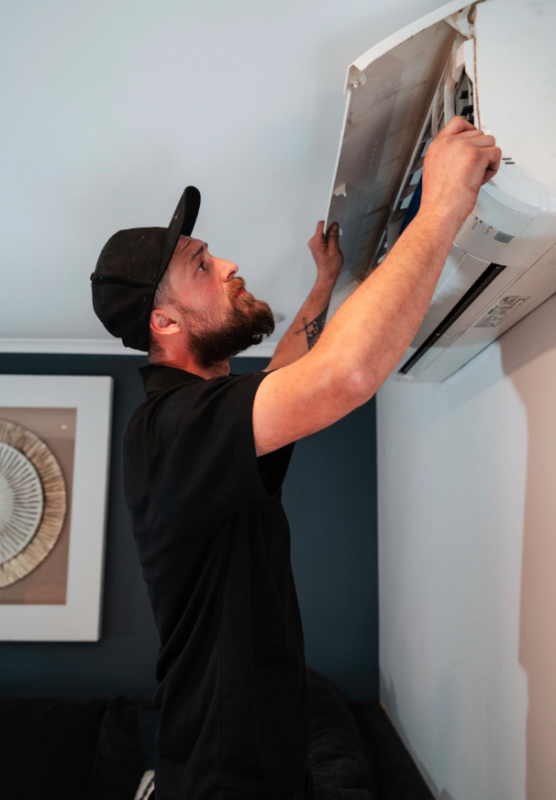1. Weak Airflow and Reduced Cooling Performance
If your air conditioner is struggling to push out cool air, dust, dirt, and debris may be blocking the filters, coils, or vents. This buildup forces your AC to work harder, reducing efficiency and increasing energy consumption. Cleaning or replacing the filters and ensuring the ducts are clear can help restore optimal airflow and cooling power.
✔ How to Spot It: Your AC runs but doesn’t cool the room as effectively as before.
2. Unpleasant Odors Coming from the Unit
A musty, damp, or foul smell coming from your air conditioning unit is often a sign of mold, mildew, or bacterial growth inside the system. This can occur due to excess moisture accumulating in the unit, particularly in humid climates. In some cases, a small animal or pest may have found its way inside the system, leading to an unpleasant odor.
✔ How to Spot It: You notice a stale or musty smell every time the AC is turned on.
3. Increased Humidity Levels Indoors
Your air conditioner not only cools your home but also helps regulate humidity levels. If your indoor air feels damp, sticky, or excessively humid, your AC may not be properly dehumidifying the space. This could be due to clogged filters, dirty coils, or excess moisture trapped within the system, leading to reduced efficiency and potential mold growth.
✔ How to Spot It: You feel damp air indoors, even when the AC is running.
4. Frozen Refrigerant Lines
Refrigerant lines should never freeze during normal operation. If you see ice buildup on the AC’s outdoor or indoor coils, it could indicate a dirty air filter, blocked airflow, or refrigerant issues. Frozen coils can cause compressor damage, leading to expensive repairs if not addressed promptly.
✔ How to Spot It: Ice forms on the refrigerant lines or unit, even on warm days.
5. Unusual Noises Coming from the Unit
A well-functioning air conditioner runs smoothly and quietly, apart from a low hum. If you hear rattling, buzzing, hissing, or grinding sounds, it could be a sign of loose parts, blocked airflow, or debris inside the unit. Ignoring these noises may result in further damage to internal components.
✔ How to Spot It: The AC is making new or excessive noises beyond the normal low-level hum.
6. Frequent Cycling and Short Run Times
Your air conditioner is designed to run in cycles to efficiently cool and maintain a steady temperature. If you notice your AC turning on and off too frequently, or struggling to keep the temperature stable, it may be due to dirty filters, clogged coils, or internal component issues.
✔ How to Spot It: Your AC cycles on and off more often than usual, leading to inconsistent cooling.
7. Higher Electricity Bills Without Increased Usage
A sudden spike in energy bills without a change in usage is a major red flag. A dirty AC system works harder to cool your home, increasing power consumption and reducing efficiency. Dirty filters, blocked vents, or an inefficient compressor can all contribute to increased electricity usage.
✔ How to Spot It: Your energy bills are noticeably higher, even though you haven’t changed your AC usage.





















